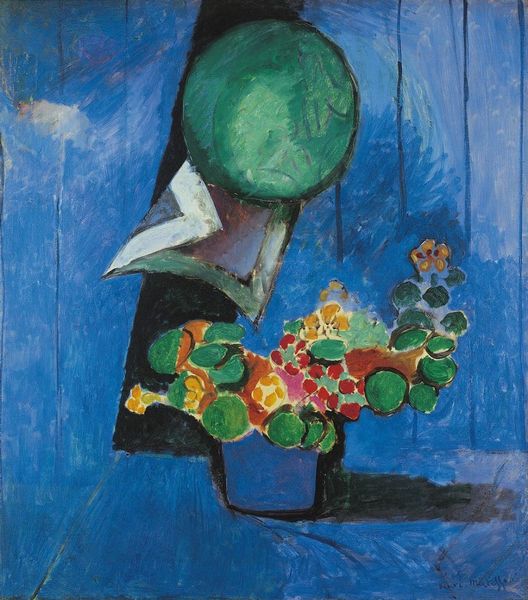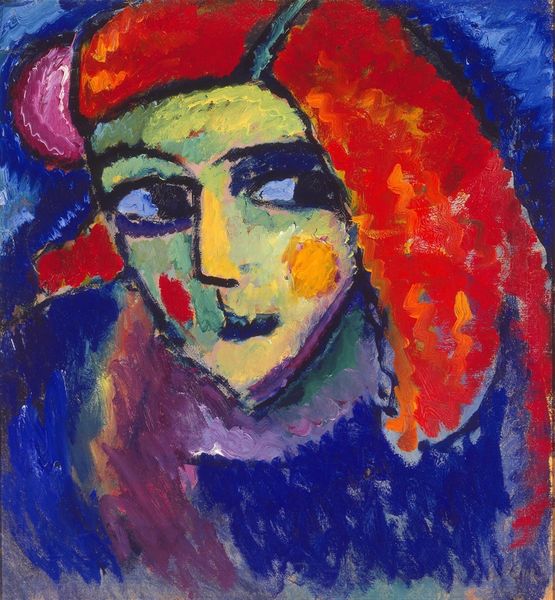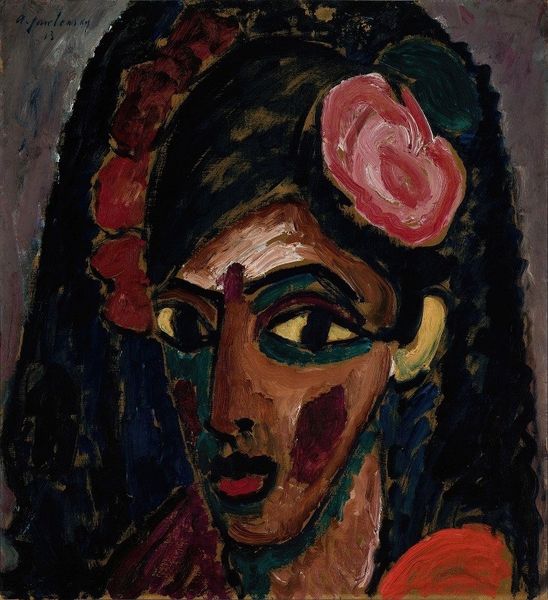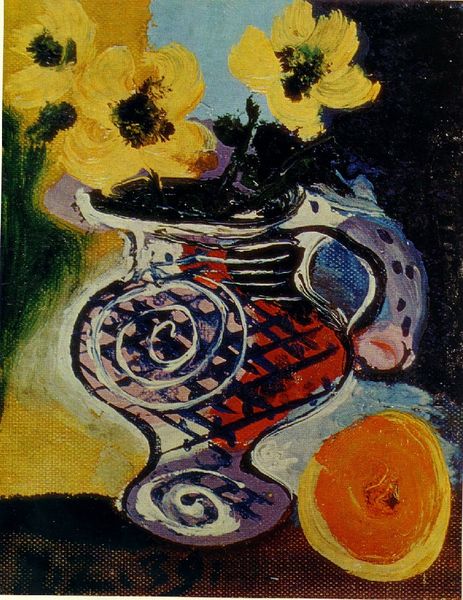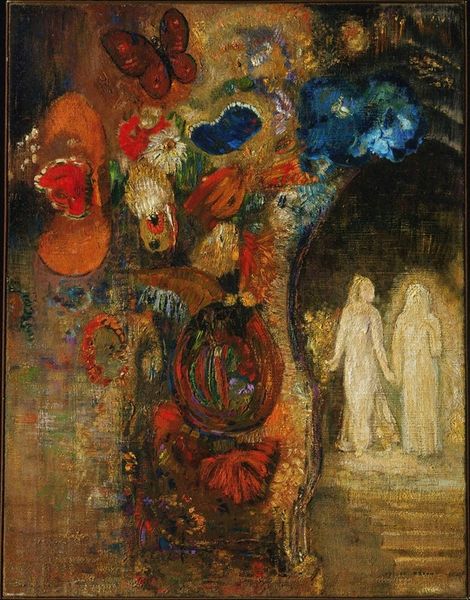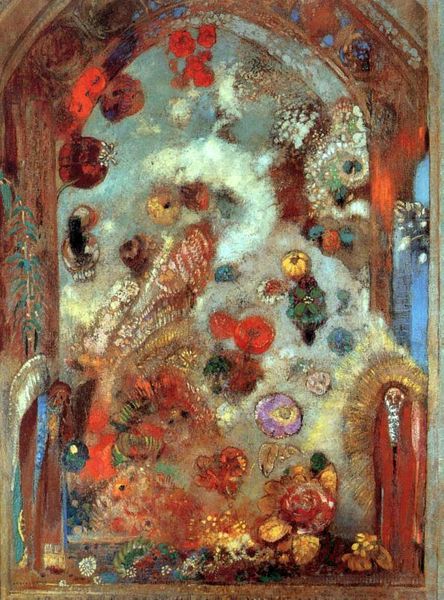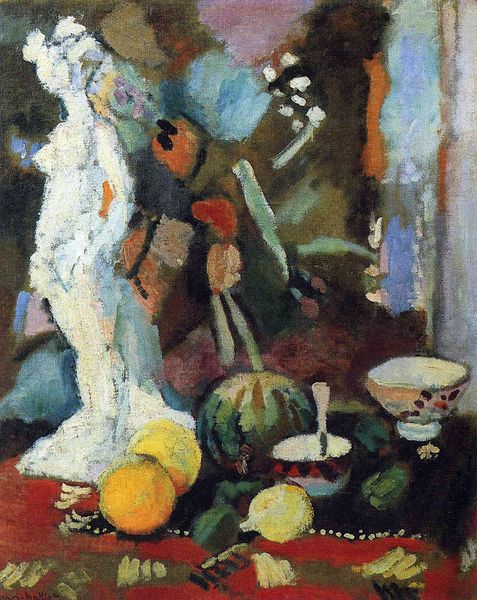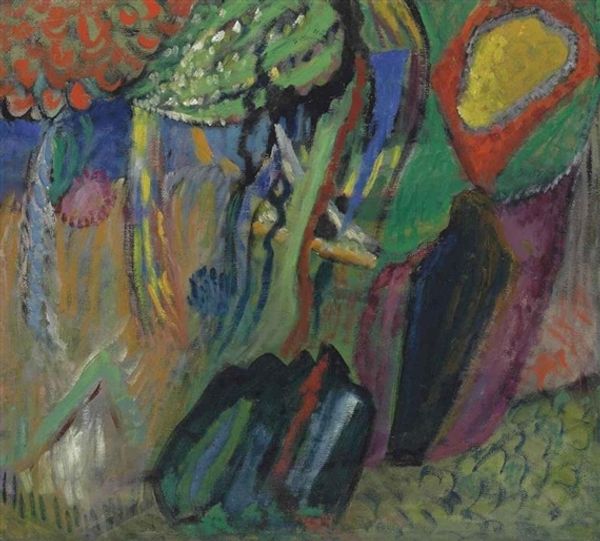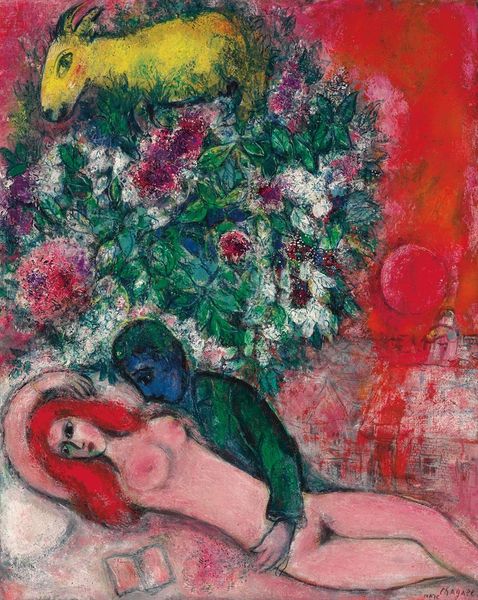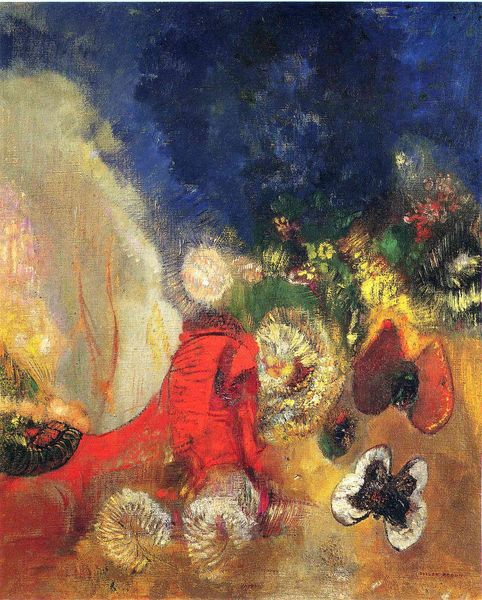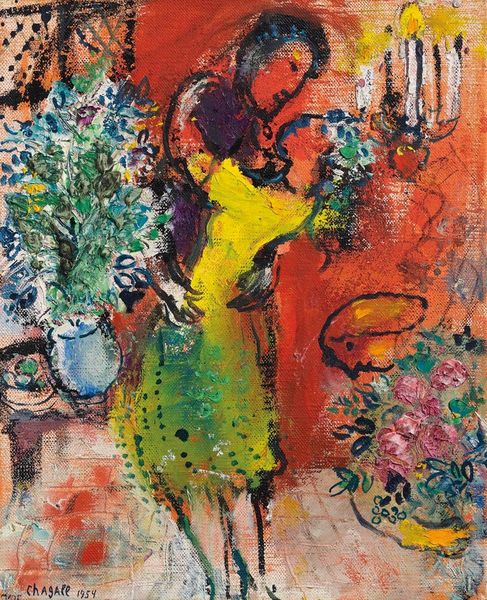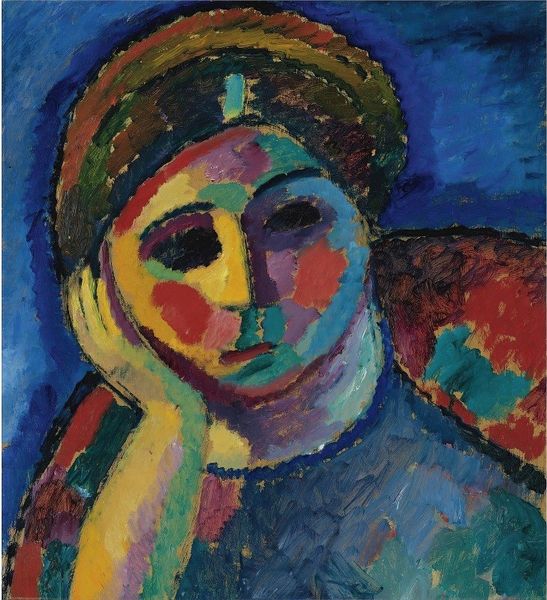
painting, oil-paint
#
portrait
#
allegories
#
symbol
#
painting
#
oil-paint
#
fantasy-art
#
painted
#
possibly oil pastel
#
oil painting
#
symbolism
Copyright: Public domain
Editor: Here we have Odilon Redon’s "Still Life - The Dream," painted in 1904. The medium appears to be oil paint, though possibly oil pastel as well. It’s a rather haunting piece; the colors are muted, almost melancholic, but with bursts of unexpected vibrancy from the flower bouquet. How do you interpret this work through a formal lens? Curator: The interest lies primarily in Redon's compositional arrangement and manipulation of color. Note how the central, frontal orientation of the figure grounds the image, while the turbulent background dissolves into abstraction. Do you perceive how the brushwork directs your eye? Editor: I do see it. The way he uses quick strokes of the brush is almost dreamlike. The red shapes near the left have less definition than the figure on the right, suggesting they are perhaps less central to "the dream." What about his specific application of color; is there significance beyond pure aesthetics? Curator: Observe the juxtaposition of the somber, earthy tones defining the figure with the concentrated bursts of chromatic intensity in the floral arrangement. Semiotically, we could interpret this as a tension between the material world and the world of imagination. The contrasting textures and application of the paint invite consideration of subjective perception. Editor: That’s fascinating. So, it is not just about *what* is painted but how those pictorial devices function together in relationship to each other. Curator: Precisely. It invites a discourse on the very act of seeing and interpreting visual information and invites questioning our presumptions about narrative meaning and expression. The materiality of the paint itself becomes a language. Editor: Thank you. It gives me much to reflect on about what painting can communicate. Curator: It gives us both insight to better evaluate the painting for its form, technique and composition.
Comments
No comments
Be the first to comment and join the conversation on the ultimate creative platform.
